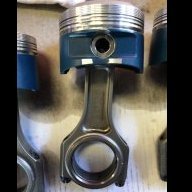The Fuel Pump Thread
Announcements
-
Similar Content
-
Latest Posts
-
That could be drilled, ground and welded. Would stop it progressing and leaking. But that block shouldn't be pushed very hard, as what you see there is a massive warning sign. But that fix also isn't going to happen properly with the engine in the car, and assembled. So you're looking at anew block if you're doing all that work anyway.
-
It's not as simple as it is being made out to be. It s not hard, but there are things that have to be done. Am busy right now, but will try to essay later.
-
By joshuaho96 · Posted
Pinout is different to my knowledge, but you should confirm to be sure. Also you will need to adjust the VQ table in Nistune to suit. I would still recommend sticking with recirculating BOVs, I'm not sure if the R35 card MAF will fully resolve stalling caused by reversion/throttle lift. -
What issues are those? Previous owner said it wants to stall sometimes. We did test drive and it was nice and smooth so it will be sporadic or idk. And if i just change MAF(the sensor to R35 version) it should be better? And as i asked...is it like "plug n play" with oem MAF from R34? This is a MAF from R35 right?
-
By joshuaho96 · Posted
Even with no BOV you will have issues unless the MAF is a hot film type like the R35 which has some design features to deal with reversion. Hot wire MAFs are very sensitive.
-




Recommended Posts
Create an account or sign in to comment
You need to be a member in order to leave a comment
Create an account
Sign up for a new account in our community. It's easy!
Register a new accountSign in
Already have an account? Sign in here.
Sign In Now